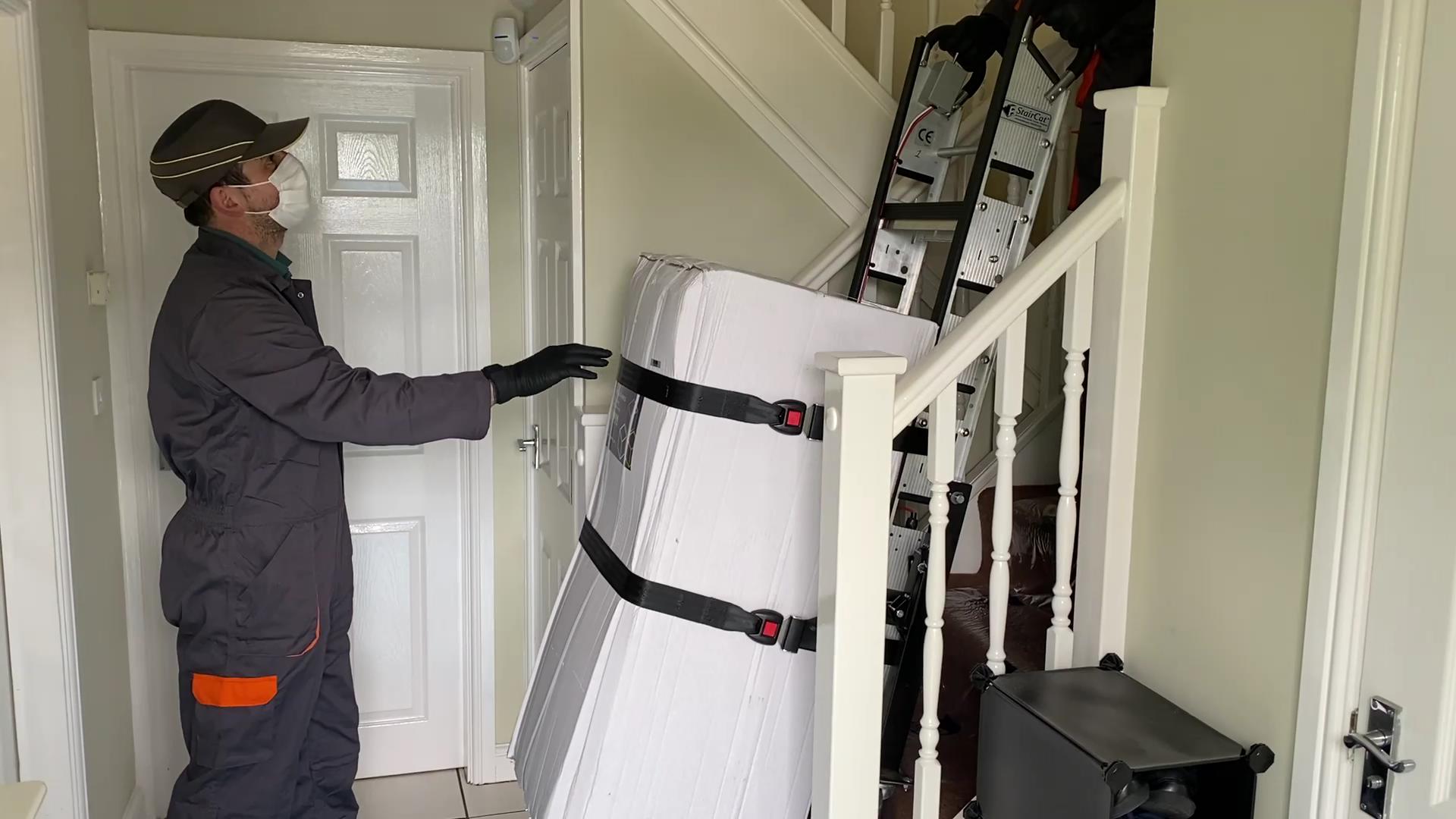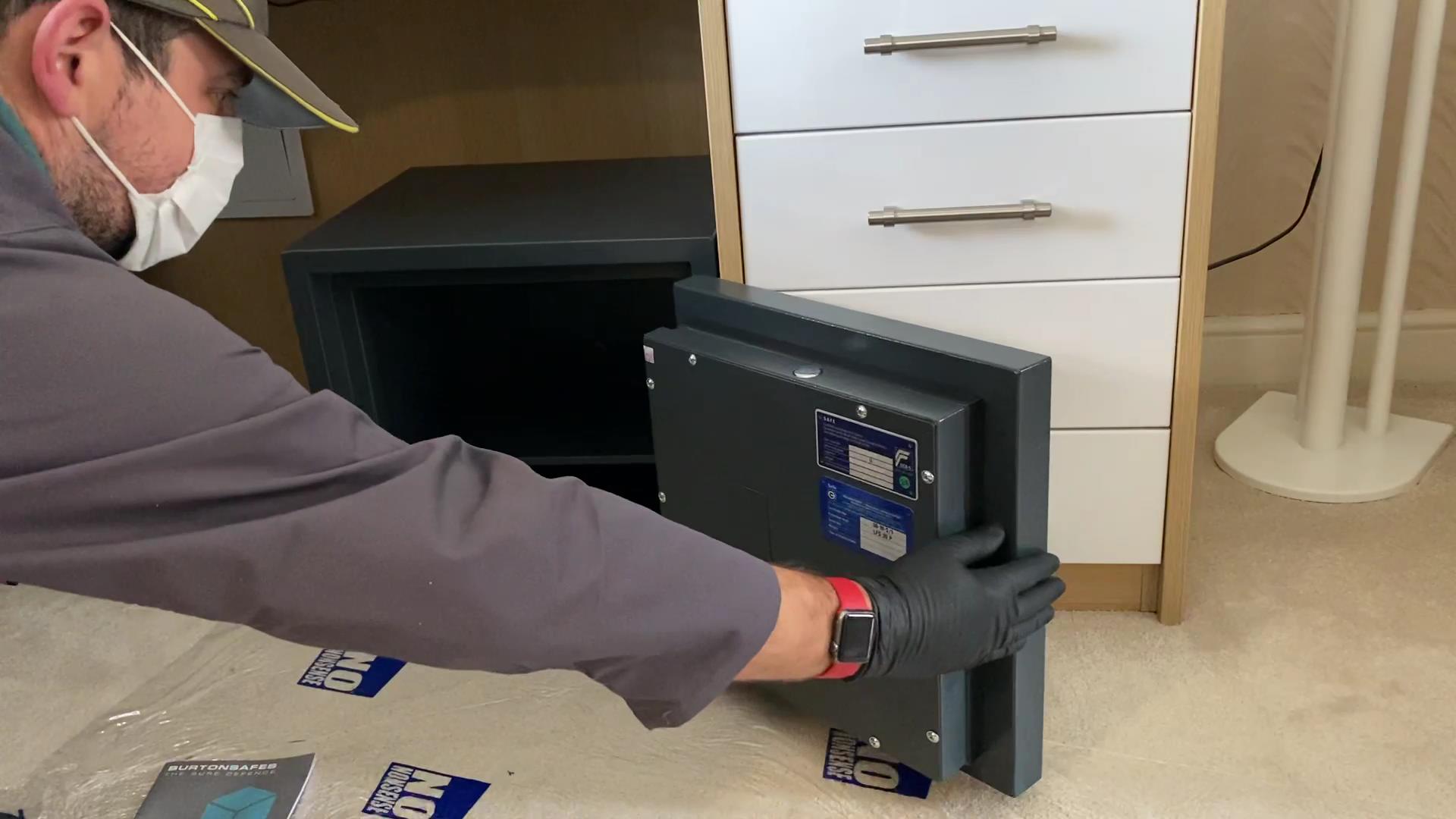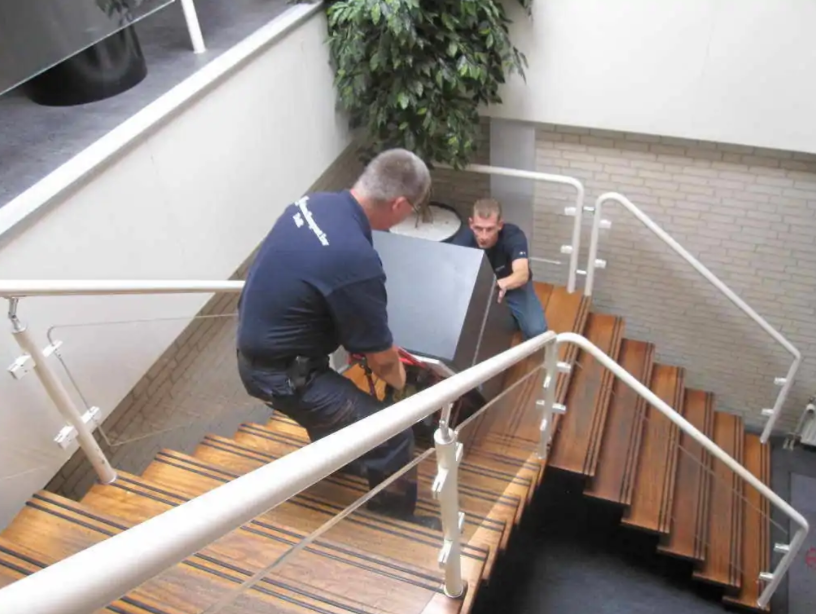Professional Installation of your Safe

A safe must also be anchored to prevent it from being easily taken along. According to the European Standard for burglar-resistant safes, a safe lighter than 1000 kg must be anchored. Anchoring is not complex, but must be carried out correctly to achieve good adhesion.
In addition, many insurers require the installation and anchoring to be carried out by a recognized and certified installer.
Installation Service Method with Simplysafes
- You order the desired safe including installation option.
- If necessary, we coordinate your specific situation, requirements and wishes with you.
- The safe is prepared and provided with any options and accessories.
- The installation team will collect the safe from our warehouse or from the manufacturer.
- An installation date will be agreed in consultation with you (take into account delivery time safe + 1 week).
- We come on site and install the safe at the desired location.
- We put the safe into operation and dispose of all packaging material.
- After delivery, you sign the completed paperwork.
Installation Process: Covid Secure








Safes installation options
Simplysafes delivers and installs safes to private individuals and business customers almost daily. However, every safe is different, and every situation is different, so that the installation is not fixed with fixed prices. However, due to our many years of experience and investment in various tools, we offer the following installation options:
Install and Anchor light safes
This installation includes safes up to 23 kg that may still be lifted according to the Working Conditions Act.
Safe is placed and anchored in the desired place.
On the product page, this option can be ordered directly with your safe. We will contact you to make an appointment.
Placing and anchoring the ground floor or floor by lift
This is a 'standard' installation where the safe is placed on the ground floor or on a floor of a business building. The floor can be reached via an elevator in the building. The safe is placed and anchored in the desired location.
Take into account:
- Passageways are sufficiently wide and high, take into account the dimensions of the safe incl. handles, fittings, hinges. We need at least 1-2 cm extra width, height or depth to be able to achieve an installation.
- If placed on a floor via lift, take into account the maximum lifting capacity of the lift. Make sure that the space is large enough to place the safe in the elevator. The lift itself must also be large enough (height, width, depth) for the safe.
- Delivery time +1 week. Appointment in consultation by telephone and email.
On the product page, this option can be ordered directly with your safe. We will contact you to make an appointment.
Place under special circumstances

This installation is different and we use various tools for each install. A stair runner is sufficient for a floor that is only accessible by stairs. Alternatively, a hoist portal or, for example, a crane can be used to bring the safe to the first floor via a balcony. Such projects are quoted in advance.
Special circumstances are:
- Spiral stairs, stairs with a kink, especially in private homes
- Drive to the property is unpaved (gravel, loose sand, etc.)
- High or multiple thresholds at the front door or inside
- Placement on the floor or in the basement that is not accessible by lift and cannot be performed according to Full Service Installation
- Placement on the floor per stair runner, hoist or crane
- If necessary, a site survey is scheduled
- Delivery time + 1-2 weeks depending on the situation. Appointment in consultation by telephone and email.
Please do not hesitate to contact us to discuss an installation
I want to install my safe myself, is that allowed and is that possible?
If you wish to insure the content, you must agree with your insurer in advance whether installation yourself is accepted. Many insurers require that the installation and anchoring is carried out by a recognized and certified installer. But even if you do not insure the content, a professional installation is a good investment. After all, the job is done competently and safely.
Placing and anchoring a safe yourself is possible with the right knowledge and tools. In particular, the lighter safes can be placed yourself. Would you like to know more or place yourself? Then read on in our blog article Placing and anchoring a safe .
Installation FAQ
Do I have to bolt my safe down?
To ensure any ratings that are applicable to the safe you will need to make sure you secure it in accordance with the manufacturer recommendations. This is because of how safes are tested. The best type of fixing you will get is into a solid concrete floor. We understand this is not always possible so a solid wall is your next best option, any skirting must be removed to make the safe flush with the wall. Finally, you can secure to a wooden floor but the fixing must go into a joist underneath. Where you are securing into a wooden floor we would recommend you confirm with your insurer prior to ordering.
I have underfloor heating but need to secure my safe down, what are my options? I have heard about a chemcial fixing.
Should there be no method of fixing to a floor or wall then you could consider a chemical fixing. This is a relatively new method and we suggest you confirm with your insurer prior to proceeding with an order to ensure they are happy to sign it off, this will help you should you need to make a claim on your policy. Just remember you will need to secure the safe direct to concrete and you will not be able to take it with you should you move home or office.
Can I install the safe myself?
You can choose to install the safe yourself should you prefer to do this. Always secure it inline with the manufacturers recommendation. It is worth noting that your insurer may insist on this to be carried out by a professional installer.
Can I secure the safe to a floor?
Securing your safe to a solid concrete floor is the best method and most secure type of fixing. Some fixing bolts can be a considerable length so you may need to check with your house builder or property management company if it is an office. Fixing into a concrete floor is inline with the manufacturers recommendations and is how safes are tested. It is not always possible to secure to a concrete floor, an alternative is a wooden floor using the joists underneath the floor. Always confirm in writing with your insurer if you are securing to a wooden floor.
Can I secure the safe to a wall?
If you have no method of securing to a floor then another option is to fix the safe to a wall. It needs to be a solid wall and not plasterboard. Should you have any queries about your wall type we can try to assist you over the phone however you may need to speak to a tradesman locally to clarify. If you are securing to a wall any skirting board would need to be removed to allow the safe to be flush with the wall.